Description
What is Opana?
Opana ER (oxymorphone) is an opioid pain medication. An opioid is sometimes called a narcotic.
Opana is used to treat moderate to severe pain.
The extended-release form of this medicine is for around-the-clock treatment of severe pain. Opana ER is not for use on an as-needed basis for pain.
The tablets contain the following inactive ingredients: hypromellose, polyethylene oxide, polyethylene glycol, α-tocopherol, citric acid, polyvinyl alcohol, titanium dioxide, macrogol and talc.
In addition, the 5 mg, 7.5 mg and 30 mg tablets contain iron oxide red. The 7.5 mg tablets contain iron oxide black, and iron oxide yellow. The 10 mg tablets contain FD&C yellow No. 6. The 20 mg tablets contain FD&C blue No. 1, FD&C yellow No. 6, and D&C yellow No. 10. The 40 mg tablets contain FD&C yellow No. 6, and D&C yellow No. 10.
The chemical name of oxymorphone hydrochloride is 4, 5α -epoxy-3, 14-dihydroxy-17-methylmorphinan-6-one hydrochloride, a white or slightly off-white, odorless powder, which is sparingly soluble in alcohol and ether, but freely soluble in water. The molecular weight of oxymorphone hydrochloride is 337.80. The pKa1 and pKa2 of oxymorphone at 37°C are 8.17 and 9.54, respectively. The octanol/aqueous partition coefficient at 37°C and pH 7.4 is 0.98.
WHAT ARE THE POSSIBLE SIDE EFFECTS OF OXYMORPHONE (OPANA, OPANA ER)?
Get emergency medical help if you have any of these signs of an allergic reaction: hives; difficult breathing; swelling of your face, lips, tongue, or throat.
Stop using oxymorphone and call your doctor at once if you have a serious side effect such as:
- shallow breathing, slow heartbeat;
- seizure (convulsions);
- cold, clammy skin;
- confusion;
- severe weakness or dizziness; or
- feeling light-headed, fainting.
Less serious side effects are more likely to occur, such as:
- nausea, vomiting,…
INDICATIONS
OPANA ER is indicated for the management of pain severe enough to require daily, around-the-clock, long-term opioid treatment and for which alternative treatment options are inadequate.
Limitations of Use
- Because of the risks of addiction, abuse, and misuse with opioids, even at recommended doses, and because of the greater risks of overdose and death with extended-release opioid formulations, reserve OPANA ER for use in patients for whom alternative treatment options (e.g., non-opioid analgesics or immediate-release opioids) are ineffective, not tolerated, or would be otherwise inadequate to provide sufficient management of pain.
- OPANA ER is not indicated as an as-needed (prn) analgesic.
DOSAGE AND ADMINISTRATION
Initial Dosing
To avoid medication errors, prescribers and pharmacists must be aware that oxymorphone is available as both immediate-release 5 mg and 10 mg tablets and extended-release 5 mg and 10 mg tablets.
OPANA ER should be prescribed only by healthcare professionals who are knowledgeable in the use of potent opioids for the management of chronic pain. Initiate the dosing regimen for each patient individually, taking into account the patient’s prior analgesic treatment experience and risk factors for addiction, abuse, and misuse. Monitor patients closely for respiratory depression, especially within the first 24-72 hours of initiating therapy with OPANA ER
OPANA ER tablets must be taken whole, one tablet at a time, with enough water to ensure complete swallowing immediately after placing in the mouth [. Crushing, chewing, or dissolving OPANA ER tablets will result in uncontrolled delivery of oxymorphone and can lead to overdose or death
OPANA ER is administered at a frequency of twice daily (every 12 hours). Administer on an empty stomach, at least 1 hour prior to or 2 hours after eating.
Use of OPANA ER as the First Opioid Analgesic
Initiate treatment with OPANA ER with the 5 mg tablet orally every 12-hours.
Use of OPANA ER in Patients who are not Opioid Tolerant
The starting dose for patients who are not opioid tolerant is OPANA ER 5 mg orally every 12 hours. Patients who are opioid tolerant are those receiving, for one week or longer, at least 60 mg oral morphine per day, 25 mcg transdermal fentanyl per hour, 30 mg oral oxycodone per day, 8 mg oral hydromorphone per day, 25 mg oral oxymorphone per day, or an equianalgesic dose of another opioid.
Use of higher starting doses in patients who are not opioid tolerant may cause fatal respiratory depression.
Conversion from OPANA to OPANA ER
Patients receiving OPANA may be converted to OPANA ER by administering half the patient’s total daily oral OPANA dose as OPANA ER, every 12 hours.
Conversion from Parenteral Oxymorphone to OPANA ER
The absolute oral bioavailability of OPANA ER is approximately 10%. Convert patients receiving parenteral oxymorphone to OPANA ER by administering 10 times the patient’s total daily parenteral oxymorphone dose as OPANA ER in two equally divided doses (e.g., [IV dose x 10] divided by 2). Due to patient variability with regards to opioid analgesic response, upon conversion monitor patients closely to evaluate for adequate analgesia and side effects.
Conversion from Other Oral Opioids to OPANA ER
Discontinue all other around-the-clock opioid drugs when OPANA ER therapy is initiated.
Drug Abuse And Dependence
Controlled Substance
OPANA ER contains oxymorphone, a Schedule II controlled substance with an abuse liability similar to other opioids including fentanyl, hydromorphone, methadone, morphine, oxycodone and tapentadol. OPANA ER can be abused and is subject to criminal diversion.
The high drug content in extended release formulations adds to the risk of adverse outcomes from abuse and misuse.
Abuse
All patients treated with opioids require careful monitoring for signs of abuse and addiction, since use of opioid analgesic products carries the risk of addiction even under appropriate medical use.
Drug abuse is the intentional non-therapeutic use of an over-the-counter or prescription drug, even once, for its rewarding psychological or physiological effects. Drug abuse includes, but is not limited to the following examples: the use of a prescription or over-the counter drug to get ”high”, or the use of steroids for performance enhancement and muscle build up.
Drug addiction is a cluster of behavioral, cognitive, and physiological phenomena that develop after repeated substance use and include: a strong desire to take the drug, difficulties in controlling its use, persisting in its use despite harmful consequences, a higher priority given to drug use than to other activities and obligations, increased tolerance , and sometimes a physical withdrawal.
“Drug seeking” behavior is very common to addicts and drug abusers. Drug-seeking tactics include emergency calls or visits near the end of office hours, refusal to undergo appropriate examination, testing or referral, repeated claims of loss of prescriptions, tampering with prescriptions and reluctance to provide prior medical records or contact information for other treating physician(s). “Doctor shopping” (visiting multiple prescribers) to obtain additional prescriptions is common among drug abusers and people suffering from untreated addiction. Preoccupation with achieving adequate pain relief can be appropriate behavior in a patient with poor pain control.
Abuse and addiction are separate and distinct from physical dependence and tolerance. Physicians should be aware that addiction may not be accompanied by concurrent tolerance and symptoms of physical dependence in all addicts. In addition, abuse of opioids can occur in the absence of true addiction.
OPANA ER, like other opioids, can be diverted for non-medical use into illicit channels of distribution. Careful record-keeping of prescribing information, including quantity, frequency, and renewal requests as required by state law, is strongly advised.
Proper assessment of the patient, proper prescribing practices, periodic re-evaluation of therapy, and proper dispensing and storage are appropriate measures that help to reduce abuse of opioid drugs.
Risks Specific to Abuse of OPANA ER
OPANA ER is for oral use only. Abuse of OPANA Pill poses a risk of overdose and death. This risk is increased with concurrent abuse of OPANA ER with alcohol and other substances. Taking cut, broken, chewed, crushed, or dissolved OPANA ER enhances drug release and increases the risk of over dose and death.
With parenteral abuse, cases of thrombotic microangiopathy (a condition characterized clinically by thrombocytopenia and microangiopathic hemolytic anemia) have been reported; many cases resulted in hospitalization and treatment with plasmapheresis. Parenteral drug abuse is commonly associated with transmission of infectious diseases such as hepatitis and HIV.
Dependence
Both tolerance and physical dependence can develop during chronic opioid therapy. Tolerance is the need for increasing doses of opioids to maintain a defined effect such as analgesia (in the absence of disease progression or other external factors). Tolerance may occur to both the desired and undesired effects of drugs, and may develop at different rates for different effects.
Physical dependence results in withdrawal symptoms after abrupt discontinuation or a significant dose reduction of a drug. Withdrawal also may be precipitated through the administration of drugs with opioid antagonist activity, e.g., naloxone, nalmefene, mixed agonist/antagonist analgesics (pentazocine, butorphanol, nalbuphine), or partial agonists (buprenorphine). Physical dependence may not occur to a clinically significant degree until after several days to weeks of continued opioid usage
OPANA ER should not be abruptly discontinued. If OPANA ER is abruptly discontinued in a physically-dependent patient, an abstinencesyndrome may occur. Some or all of the following can characterize this syndrome: restlessness, lacrimation, rhinorrhea, yawning, perspiration, chills, myalgia, and mydriasis. Other signs and symptoms also may develop, including: irritability, anxiety, backache, joint pain, weakness, abdominal cramps, insomnia, nausea, anorexia, vomiting, diarrhea, or increased blood pressure, respiratory rate, or heart rate.
Medication Guide For Opana ER 40mg
PATIENT INFORMATION Opana ER 40mg
OPANA®ER
(O-pan-a)
(oxymorphone hydrochloride extended-release) Tablets, for Oral Use
OPANA ER is:
- A strong prescription pain medicine that contains an opioid (narcotic) that is used to treat moderate to severe around-the-clock pain.
Important information about OPANA ER:
- Get emergency help right away if you take too much OPANA ER (overdose). OPANA ER overdose can cause life threatening breathing problems that can lead to death.
- Never give anyone else your OPANA Pill. They could die from taking it. Store OPANA ER away from children and in a safe place to prevent stealing or abuse. Selling or giving away OPANA ER is against the law.
Do not take OPANA ER if you have:
- severe asthma, trouble breathing, or other lung problems.
- a bowel blockage or have narrowing of the stomach or intestines.
Before taking OPANA ER, tell your healthcare provider if you have a history of:
- head injury, seizures
- liver, kidney, thyroid problems
- problems urinating
- pancreas or gallbladder problems
- abuse of street or prescription drugs, alcohol addiction, or mental health problems.
Tell your healthcare provider if you are:
- pregnant or planning to become pregnant. OPANA Pill may harm your unborn baby.
- breastfeeding. OPANA ER may pass into breast milk and may harm your baby.
- taking prescription or over-the-counter medicines, vitamins, or herbal supplements.
When taking OPANA Pill:
- Do not change your dose. Take OPANA ER exactly as prescribed by your healthcare provider.
- Take your prescribed dose every 12 hours at the same time every day on an empty stomach, at least 1 hour before or 2 hours after meals. Do not take more than your prescribed dose in 24 hours. If you miss a dose, take the missed dose as soon as possible. If it is almost time for your next dose, skip the missed dose and go back to your regular dosing schedule.
- Swallow Opana Pill whole. Do not cut, break, chew, crush, dissolve, or inject OPANA ER.
- Call your healthcare provider if the dose you are taking does not control your pain.
- Do not stop taking OPANA ER without talking to your healthcare provider.
- After you stop taking OPANA Pill, flush any unused tablets down the toilet.
While taking OPANA ER Do Not:
- Drive or operate heavy machinery, until you know how OPANA ER affects you. OPANA Pill can make you sleepy, dizzy, or lightheaded.
- Drink alcohol or use prescription or over-the-counter medicines that contain alcohol.
The possible side effects of OPANA ER:
- constipation, nausea, sleepiness, vomiting, tiredness, headache, dizziness, abdominal pain. Call your healthcare provider if you have any of these symptoms and they are severe.

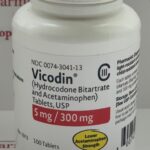
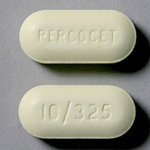
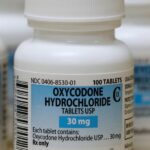
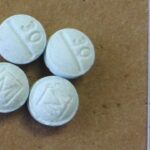
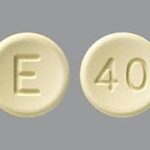
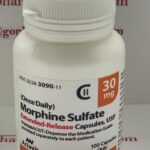
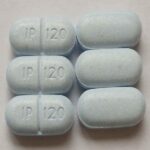
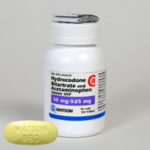
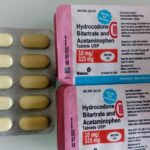
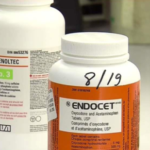

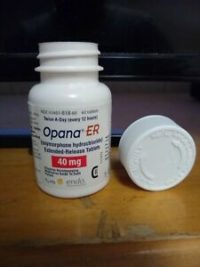
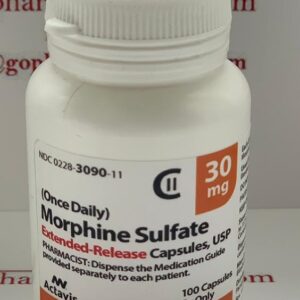
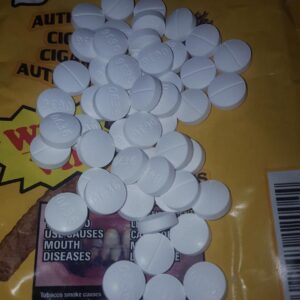
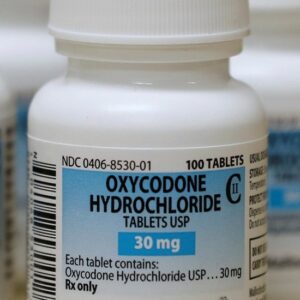
Reviews
There are no reviews yet.